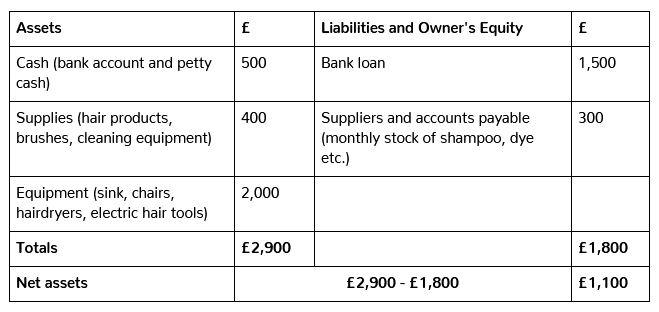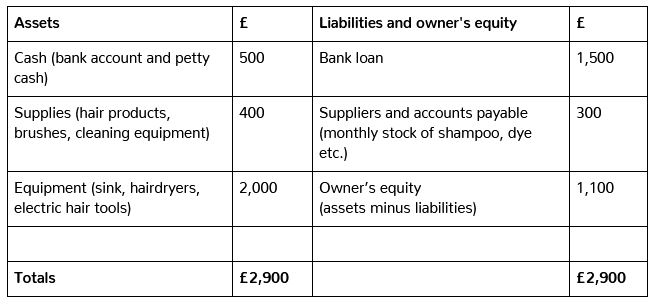How to work out net assets
Table of Contents
When managing your business, it can be useful to know the worth of your company and the assets you own, for various financial documents and your business plan. By knowing the value of your business, you can make informed choices about growth and profitability.
In this article we will cover how to work out your business’ net assets by looking at the following areas:
- Definition of net assets
- How to work out net assets
- Step 1: Add up assets
- Step 2: Add up liabilities
- Step 3: Calculate net assets
- Step 4: Create a balance sheet to check
What are net assets?
Net assets are the total assets of a company (what you own), minus any liabilities (what you owe). Basically, net assets would be what your company owns once all debts are paid.
How do I work out my assets?
To calculate net assets, subtract your debts from the total value of your business assets.
Net Assets = Assets – Liabilities
In order to do this sum, you’ll need to take a few steps to get the totals to begin with.
Step 1: Add up assets
First, you need to understand what assets you hold. Assets are items or resources that have financial value. This can include both physical items, such as machinery or vehicles, and sometimes intangible items, such as copyrights or branding. To work out net assets, though, we will only look at physical valuable things, as intangible assets are a little more complex to assign a value to.
Assets are often separated into two groups, current and fixed assets, based on how quickly that asset can be turned into cash.
Current assets
Current assets can be quickly converted to money. Start by listing any current assets you own in a spreadsheet with their value in a separate column. These are things that are fairly simple to sell and value, such as:
- Stock and inventory
- Cash in the bank
- Money owed to you
- Customer deposits
- Office furniture, equipment or supplies
- Phones or laptops
- Even more trivial items like a fancy coffee machine or pool table
Fixed assets
Fixed assets are valuable items that would be a more long-term sale and hence it would take longer to get the cash in your pocket. These can be valuable resources such as:
- Property or buildings
- Machinery
- Specialised equipment for your business operations
- Investments such as stocks or bonds that may take a while to cash out
- Vehicles
Step 2: Add up liabilities
The next step is to list your business’ liabilities. These are the monies that you owe to other parties, so it can cover anything such as:
- A business loan
- A mortgage or rent payment on a property
- Supplier contracts you owe
- Other financial obligations, such as paying wages or freelancers for support
- Taxes due to be paid to HMRC
List these as you did with your assets, on a spreadsheet, with their value on a separate column. Think of your assets like money in your pocket and liabilities as the items that take it out of your hands. This might help you when listing items and making sure you don’t forget anything.
Step 3: Calculate net assets
So now you have your two totals, assets and liabilities, you will use the following sum to calculate the net assets you hold:
Assets – Liabilities = Net Assets
By subtracting the liabilities from your assets column, you will be showing what you would be left with if all valuables were sold and debts paid.
For example, let’s look at what this might look like for a self-employed hairdresser:

So in this case, the hairdresser has net assets of £1,100.
Step 4: Create a balance sheet to check
A common report for small businesses that checks their financial health is a balance sheet. You’ve already totalled up your assets and liabilities and so using a balance sheet to check your calculations is an extra step to understanding your business’ worth.
The following formula determines the balance sheet:
Assets = liabilities + owner’s equity
We’ve already covered assets and liabilities, but what is owner’s equity? This is how much of the assets you own as the owner of the business. If you are a sole trader or the only owner of the company, with no shareholders then this will be a simple calculation.
The net assets figure is your owner’s equity total. It shows how much you would be left with if all assets were sold and all debts were paid. You’ve already worked it out, as the formula for owner’s equity is the same as the calculation of the net assets.
Assets – Liabilities = Owner’s equity
So, to put this into a balance sheet, you’d add your assets on one side of a table, and your liabilities and equity on the other. As the name suggests, the totals should balance. Using the same hairdresser example, the balance sheet should look as follows:

If you use your assets, liabilities and net assets totals, the sides of the sheet should balance. If they don’t, you need to double-check your figures and ensure you have calculated the net assets properly.
Save time on financial admin everyday
Countingup is the business current account that helps you manage all your financial data in one place. The app comes with free built-in accounting software that automates the time-consuming aspects of bookkeeping and taxes.
You can view real-time insights into your business finances, profit and loss statements, tax estimates, and create invoices in seconds. All these features and more will make working out things like your net assets much easier. Find out more here.



